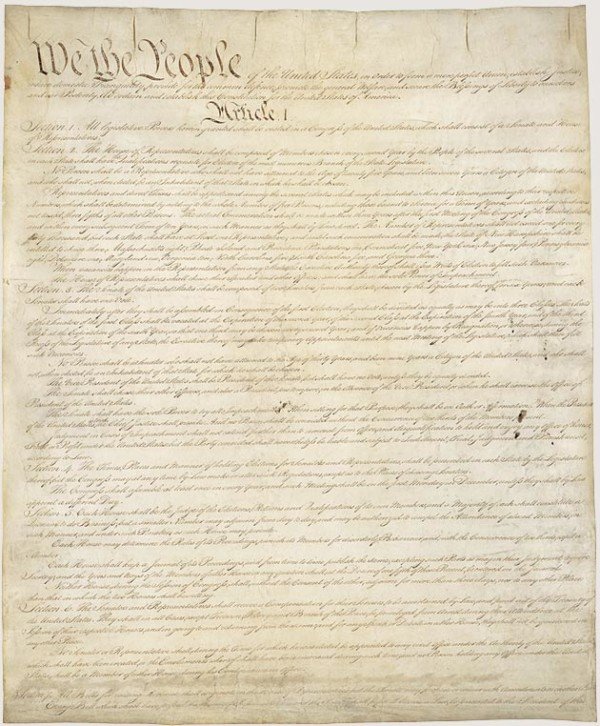Editor’s note: The information in this article is presented for general discussion and is not legal advice. Many of the laws have changed since this article was written. You should not rely on this information. You should consult with your department’s legal team for guidance.
On October 20, 2014, the case of United States v. Reid was decided by the 8th United States Circuit Court of Appeals. Under review was the reasonableness of evidence located and used against a second person when officers entered the residence at the request of a person they had just placed under arrest for a Federal Probation Violation warrant.

The 4th Amendment to the U.S. Constitution is the most influential and important Federal guideline to America’s law enforcement officers, because it deals directly with the search and seizure of citizens and their property. As a free nation the protections established in the 4th Amendment are sacred to the foundations of our liberty. The standard of a search or seizure that is Constitutionally acceptable is whether the action was reasonable under the law.
The Background of Arrest
In 2011, Reid, the subject of the appeal, was living with his girlfriend, Earnestine Graham in the St. Louis area. Both were convicted felons, and Graham was on Federal Supervised Release. When Graham’s Federal Probation Officer learned of her living arrangement with Reid, it violated her conditioned release and an arrest warrant for Graham was obtained through the U.S. District Court for Eastern Missouri.
On October 10, 2011 a group of Deputy U.S. Marshals and St. Louis Police detectives went to Graham’s home around 0630 hours to execute the arrest warrant. When the officers arrived they found the front door slightly cracked open and a Deputy Marshal pushed the door open. At that time the Deputy observed Graham inside the residence, about eight to ten feet away, and dressed in pajamas. The Deputy Marshal ordered Graham to walk to the front door and turn around. Graham complied, was handcuffed, and brought outside of the house.

The officers then asked Graham if there was anyone else inside of the residence. Graham told the officers that her minor children were the only others inside the home. Several officers in the team conducted a protective sweep of the entire residence. When the sweep was completed, and Graham was advised that she would be taken to the U.S. District Court to answer for the warrant, she was “allowed” to reenter the residence to dress appropriately.
Plain View Discovery
To maintain custody and security of Graham while she dressed, an officer accompanied Graham to her bedroom. While in the bedroom the officer observed an SKS rifle in plain view. When questioned about the firearm, Graham claimed that it belonged to her boyfriend Reid. She also claimed that no other firearms were in the residence.

About that time Reid arrived to the scene and parked his car near the residence. Other officers on the scene observed this and upon questioning Reid they learned he was Graham’s boyfriend and detained him outside of the house. During this time the Deputies inside the residence advised Graham of her Miranda rights and asked for a consent to search the house for further evidence.
Consent to Search
Graham agreed to the search, and signed a consent form. While searching the home, officers discovered a shotgun on a windowsill in Graham’s bedroom, a disassembled pistol, and ammunition. Based upon the evidence located in the house, and Graham’s statements, Reid was arrested for unlawful possession of a firearm by a convicted felon. A Federal Grand Jury indicted Reid and he was tried at the U.S. District Court.

Before trial Reid filed a motion to suppress the evidence found in the residence that he shared with his girlfriend Graham. The District Court denied Reid’s motion, and he went to a jury trial where he was convicted. After conviction he appealed to the U.S. Eighth Circuit Court of Appeals claiming the denial of his motion to suppress violated his Constitutional Rights guaranteed under the 4th Amendment.
The Basis of Appeal
The appeal centered on the argument that it was a violation of Reid’s 4th Amendment protections when officers entered the jointly owned residence without a search warrant.

The 8th U.S. Circuit Court of Appeals reasoned that when an arrestee chooses to reenter her home it is reasonable for officers to enter with her and maintain a watch of the arrestee. The Court referenced, Illinois v. McArthur, 531 U.S. 326, 335 (2001); Washington v. Chrisman, 455 U.S. 1, 6-7 (1982); DeBuse, 289 F.3d at 1074-75.
Upon Review of the Appellate Court
The Court continued its review by noting the fact that Graham was only dressed in pajamas at the time of her arrest. The Deputy Marshals allowed Graham to enter her home to change into actual clothes and, it was reasonable for the officers to remain with Graham while she was inside the residence. Reid argued that Graham did not actually request to change clothes.

However, the Court of Appeals determined that the U.S. District Court found Graham was “allowed,” to reenter the residence, which implied that she wither made a request or was in agreement with the purpose and action. Graham’s failure to protest, and completion of the task of dressing, showed the Court that she was at least compliant in the entry into the house, whether she directly stated such agreement.
The Finding of Reasonableness
Therefore, the Court of Appeals viewed these components of this situation in its findings:
- The reasonableness of the purpose to enter the house (to more properly dress Graham)
- An act by Graham in compliance to the request (a form of consent)
- The lack of protest by Graham to the action
- The previously recognized appropriateness for officers to escort an arrestee into their home at their request.
Based upon all of the above, the Court of Appeals ruled it was reasonable for the Deputy Marshals and officers to enter the house. Since it was reasonable for the Deputy Marshals to be in the residence, the observation of the SKS rifle in plain view was an observation made in a lawfully occupied place of the officers.
After that discovery, the Deputy Marshals provided Graham with Miranda warnings and obtained a written consent to search the remainder of the residence. Reid was not in the residence at the time, and therefore could not revoke Graham’s consent. Even when he arrived, he did not make that demand. The additional firearms and ammunition were located, and based upon the totality of the evidence, it was probable to charge Reid for being unlawfully in possession of the firearms as a convicted felon.
Therefore, the 8th U.S. Circuit Court of Appeals affirmed the denial of the motion to suppress, and Reid was properly convicted of the charged crime.
This case centers around the core evaluation of 4th Amendment legal considerations. Did the officers go about their lawful duties in a reasonable manner, that provided the citizen every means of protection while allowing the officers the reasonable means to protect themselves. In this case the Federal Appellate Court recognized that the officers successfully completed all of these tasks, which allowed their discoveries inside to be lawfully admitted into evidence against Reid at trial.